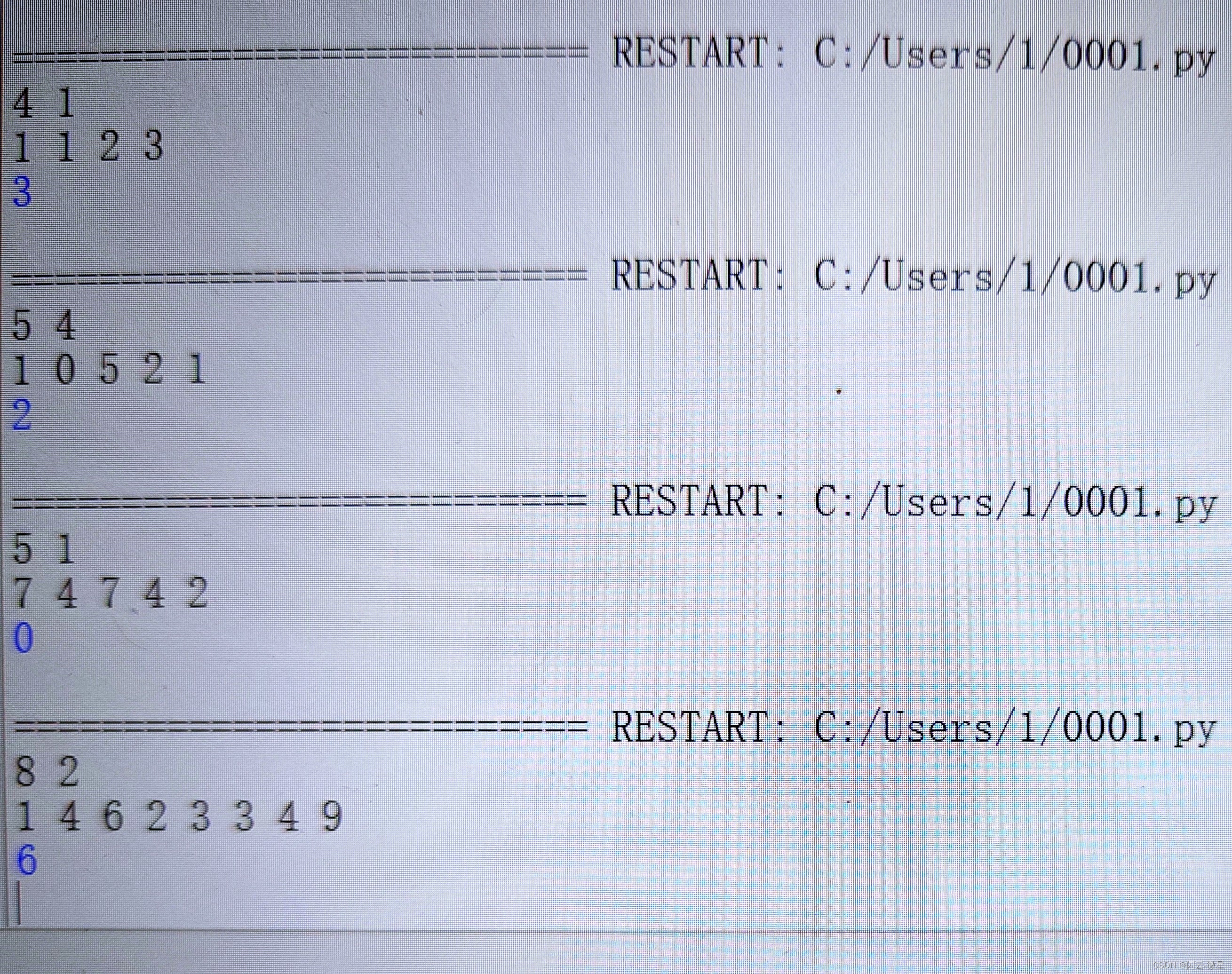🏆🏆欢迎大家来到我们的天空🏆🏆
🏆 作者简介:我们的天空
🏆《头衔》:大厂高级软件测试工程师,阿里云开发者社区专家博主,CSDN人工智能领域新星创作者。
🏆《博客》:人工智能,深度学习,机器学习,python,自然语言处理,AIGC等分享。所属的专栏:TensorFlow项目开发实战,人工智能技术
🏆🏆主页:我们的天空
一、项目概述
在这个项目中,我们将使用TensorFlow进行大规模的对象检测。对象检测是计算机视觉领域的一个重要应用,它涉及从图像或视频中识别和定位特定的对象。TensorFlow作为一个强大的开源机器学习库,提供了丰富的工具和API来支持这一任务。
二、项目结构
1.数据准备
-
原始数据集
- 收集或下载已标注的数据集,例如COCO数据集。
- 确保每张图片都带有相应的标注文件(如XML或JSON格式)。
-
数据预处理
- 使用Python脚本来读取和处理图像及标注文件。
- 实现图像的裁剪、缩放、翻转等增强操作。
- 将图像转换为模型所需的格式,并将标注文件转换为TensorFlow Object Detection API所需的格式。
-
数据集划分
- 将数据集划分为训练集、验证集和测试集,通常比例为70%、15%、15%。
- 保证每个子集都有足够的样本多样性。
2.模型训练
-
模型选择
- 选择预训练模型,例如SSD、Faster R-CNN或YOLO。
- 考虑模型的速度与准确性之间的权衡。
-
模型训练
- 使用TensorFlow Object Detection API进行模型训练。
- 设置超参数,如学习率、批次大小、迭代次数等。
- 定期保存检查点以便后续恢复训练。
-
模型评估
- 在验证集上评估模型性能,使用指标如mAP (mean Average Precision)。
- 使用混淆矩阵来评估模型的分类性能。
- 根据评估结果调整模型参数或数据增强策略。
3.模型部署
-
模型导出
- 导出训练好的模型为SavedModel或FrozenGraph格式。
- 这样可以方便地在生产环境中部署模型。
-
实时推理
- 构建一个轻量级的服务来处理实时数据流。
- 使用TensorFlow Serving或其他服务框架来提供API接口。
-
离线推理
- 对于批量处理任务,可以使用批处理推理。
- 利用多GPU加速来提高处理速度。
4.源代码和文档
-
源代码
- 使用Git进行版本控制。
- 包含数据预处理脚本、模型训练脚本、模型评估脚本等。
-
文档
- 提供安装指南,包括依赖项安装、环境搭建等。
- 使用说明,包括如何运行模型训练、评估、推理等。
- 代码注释清晰,便于他人理解和维护。
三、架构设计和技术栈
1.架构设计
- 数据层:负责数据的收集、清洗、标注、预处理和划分。
- 模型层:负责加载预训练模型、训练、评估和调参。
- 推理层:负责使用训练好的模型进行实时或离线推理。
- 接口层:提供API接口,供外部系统调用。
2.技术栈
- TensorFlow:用于模型训练和推理的核心框架。
- Python:主要编程语言。
- NumPy:用于数据处理和数学运算。
- Matplotlib、PIL:用于图像处理和可视化。
- TensorFlow Object Detection API:提供预训练模型和训练、评估、推理的接口。
- Git:版本控制工具。
四、框架和模型
1.框架
- 使用 TensorFlow Object Detection API 进行模型训练和推理。
- 利用其提供的工具和预训练模型加速开发过程。
2.模型
- 预训练模型:选择适合项目需求的预训练模型,例如SSD或Faster R-CNN。
- 模型定制:根据具体任务调整模型架构和参数,如修改类别数、调整输入尺寸等。
五、实施步骤
-
环境搭建
- 安装TensorFlow、TensorFlow Object Detection API和其他依赖包。
- 设置GPU环境(如果可用)。
-
数据准备
- 下载或准备原始数据集。
- 编写数据预处理脚本。
- 划分数据集。
-
模型训练
- 选择一个预训练模型作为起点。
- 编写训练脚本,包括定义模型、设置超参数、训练循环等。
- 训练模型并定期保存检查点。
-
模型评估
- 在验证集上评估模型性能。
- 分析评估结果,必要时调整模型或数据增强策略。
-
模型部署
- 导出训练好的模型。
- 构建实时或离线推理服务。
-
文档编写
- 编写详细的安装指南和使用说明。
六、关键代码示例
1. 数据预处理脚本
python"># data_preprocessing.py
import os
import xml.etree.ElementTree as ET
import tensorflow as tf
from object_detection.utils import dataset_util
from PIL import Imagedef create_tf_example(group, path):with tf.io.gfile.Gfile(os.path.join(path, '{}'.format(group.filename)), 'rb') as fid:encoded_jpg = fid.read()encoded_jpg_io = io.BytesIO(encoded_jpg)image = Image.open(encoded_jpg_io)width, height = image.sizefilename = group.filename.encode('utf8')image_format = b'jpg'xmins = []xmaxs = []ymins = []ymaxs = []classes_text = []classes = []for index, row in group.object.iterrows():xmins.append(row['xmin'] / width)xmaxs.append(row['xmax'] / width)ymins.append(row['ymin'] / height)ymaxs.append(row['ymax'] / height)classes_text.append(row['name'].encode('utf8'))classes.append(row['id'])tf_example = tf.train.Example(features=tf.train.Features(feature={'image/height': dataset_util.int64_feature(height),'image/width': dataset_util.int64_feature(width),'image/filename': dataset_util.bytes_feature(filename),'image/source_id': dataset_util.bytes_feature(filename),'image/encoded': dataset_util.bytes_feature(encoded_jpg),'image/format': dataset_util.bytes_feature(image_format),'image/object/bbox/xmin': dataset_util.float_list_feature(xmins),'image/object/bbox/xmax': dataset_util.float_list_feature(xmaxs),'image/object/bbox/ymin': dataset_util.float_list_feature(ymins),'image/object/bbox/ymax': dataset_util.float_list_feature(ymaxs),'image/object/class/text': dataset_util.bytes_list_feature(classes_text),'image/object/class/label': dataset_util.int64_list_feature(classes),}))return tf_exampledef xml_to_tfrecords(xml_dir, images_dir, output_path):writer = tf.io.TFRecordWriter(output_path)for xml_file in os.listdir(xml_dir):tree = ET.parse(os.path.join(xml_dir, xml_file))root = tree.getroot()image_data = {}image_data['filename'] = root.find('filename').textsize = root.find('size')image_data['width'] = int(size.find('width').text)image_data['height'] = int(size.find('height').text)image_data['object'] = []for member in root.findall('object'):obj = {}obj['name'] = member[0].textobj['pose'] = member[1].textobj['truncated'] = int(member[2].text)obj['difficult'] = int(member[3].text)bbox = member[4]obj['xmin'] = int(bbox[0].text)obj['ymin'] = int(bbox[1].text)obj['xmax'] = int(bbox[2].text)obj['ymax'] = int(bbox[3].text)obj['id'] = 1 # 假设只有一个类别image_data['object'].append(obj)tf_example = create_tf_example(image_data, images_dir)writer.write(tf_example.SerializeToString())writer.close()2. 模型训练脚本
python"># model_training.py
import os
import tensorflow as tf
from object_detection.builders import model_builder
from object_detection.utils import config_util
from object_detection.utils import label_map_util
from object_detection.utils import visualization_utils as viz_utils
from object_detection.builders import pipeline_builder
import numpy as np
from object_detection.utils import dataset_util# Load the configuration file
configs = config_util.get_configs_from_pipeline_file('/path/to/pipeline.config')
detection_model = model_builder.build(model_config=configs['model'], is_training=True)# Load the training data
train_input_fn = tf.data.TFRecordDataset('/path/to/train.record').map(lambda x: tf.io.parse_single_example(x, feature_description)).batch(batch_size)# Define the optimizer and loss function
optimizer = tf.keras.optimizers.Adam(learning_rate=0.001)
loss_fn = detection_model.model.loss# Training loop
num_epochs = 10
for epoch in range(num_epochs):for batch, (images, labels) in enumerate(train_input_fn):with tf.GradientTape() as tape:predictions = detection_model(images, training=True)loss = loss_fn(labels, predictions)gradients = tape.gradient(loss, detection_model.trainable_variables)optimizer.apply_gradients(zip(gradients, detection_model.trainable_variables))if batch % 100 == 0:print(f'Epoch {epoch+1}, Batch {batch}, Loss {loss.numpy()}')# Save the trained model
tf.saved_model.save(detection_model, '/path/to/saved_model')3. 模型评估脚本
python"># model_evaluation.py
import tensorflow as tf
from object_detection.builders import model_builder
from object_detection.utils import config_util
from object_detection.utils import label_map_util
from object_detection.utils import visualization_utils as viz_utils
from object_detection.metrics import coco_evaluation
import numpy as np# Load the configuration file
configs = config_util.get_configs_from_pipeline_file('/path/to/pipeline.config')
detection_model = model_builder.build(model_config=configs['model'], is_training=False)# Load the validation data
val_input_fn = tf.data.TFRecordDataset('/path/to/validation.record').map(lambda x: tf.io.parse_single_example(x, feature_description)).batch(batch_size)# Evaluation loop
metrics = coco_evaluation.CocoDetectionEvaluator(category_index=label_map_util.create_category_index_from_labelmap('/path/to/label_map.pbtxt'))for batch, (images, labels) in enumerate(val_input_fn):detections = detection_model(images, training=False)# Convert detections to COCO formatdetections_coco = convert_detections_to_coco_format(detections)metrics.update_state(groundtruths=labels, detections=detections_coco)# Compute metrics
metrics.result()4. 模型部署脚本
python"># model_deployment.py
import tensorflow as tf
from flask import Flask, request, jsonify
import numpy as np
from object_detection.utils import label_map_util
from object_detection.utils import visualization_utils as viz_utils
from PIL import Image
import ioapp = Flask(__name__)# Load the saved model
detection_model = tf.saved_model.load('/path/to/saved_model')# Load the label map
category_index = label_map_util.create_category_index_from_labelmap('/path/to/label_map.pbtxt')@app.route('/detect', methods=['POST'])
def detect_objects():if 'image' not in request.files:return jsonify({'error': 'No image provided.'}), 400file = request.files['image']image = Image.open(file.stream)image_np = np.array(image)# Run inferenceinput_tensor = tf.convert_to_tensor(image_np)input_tensor = input_tensor[tf.newaxis, ...]detections = detection_model(input_tensor)# Process detectionsnum_detections = int(detections.pop('num_detections'))detections = {key: value[0, :num_detections].numpy()for key, value in detections.items()}detections['num_detections'] = num_detectionsdetections['detection_classes'] = detections['detection_classes'].astype(np.int64)# Visualize detectionsimage_with_boxes = viz_utils.visualize_boxes_and_labels_on_image_array(image_np,detections['detection_boxes'],detections['detection_classes'],detections['detection_scores'],category_index,use_normalized_coordinates=True,line_thickness=8)# Return resultsreturn jsonify({'detection_boxes': detections['detection_boxes'].tolist(),'detection_classes': detections['detection_classes'].tolist(),'detection_scores': detections['detection_scores'].tolist()})if __name__ == '__main__':app.run(host='0.0.0.0', port=5000)七、 文档编写
1.安装指南
-
安装TensorFlow:
pip install tensorflow2.安装TensorFlow Object Detection API:
git clone https://github.com/tensorflow/models.git
cd models/research
protoc object_detection/protos/*.proto --python_out=.3.安装其他依赖:
pip install pillow
pip install lxml
pip install jupyter
pip install matplotlib
pip install flask2.使用说明
-
数据预处理:
- 运行
data_preprocessing.py脚本来将XML标注文件转换为TFRecord格式。
- 运行
-
模型训练:
- 修改
pipeline.config文件以指定训练数据路径、验证数据路径等。 - 运行
model_training.py脚本来训练模型。
- 修改
-
模型评估:
- 运行
model_evaluation.py脚本来评估模型性能。
- 运行
-
模型部署:
- 运行
model_deployment.py脚本来启动API服务。 - 使用POST请求向
/detect发送图像以获取检测结果。
- 运行
以上代码仅为示例,您需要根据实际需求进行调整和完善。希望这个指南能帮助您顺利完成项目!如果有任何具体的技术问题或者需要更深入的指导,请随时告知。
如果文章内容对您有所触动,别忘了点赞、关注,收藏!
推荐阅读:
1.【人工智能】项目实践与案例分析:利用机器学习探测外太空中的系外行星
2.【人工智能】利用TensorFlow.js在浏览器中实现一个基本的情感分析系统
3.【人工智能】TensorFlow lite介绍、应用场景以及项目实践:使用TensorFlow Lite进行数字分类
4.【人工智能】项目案例分析:使用LSTM生成图书脚本
5.【人工智能】案例分析和项目实践:使用高斯过程回归预测股票价格




